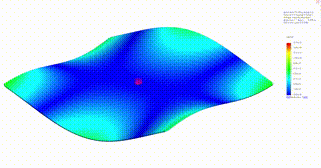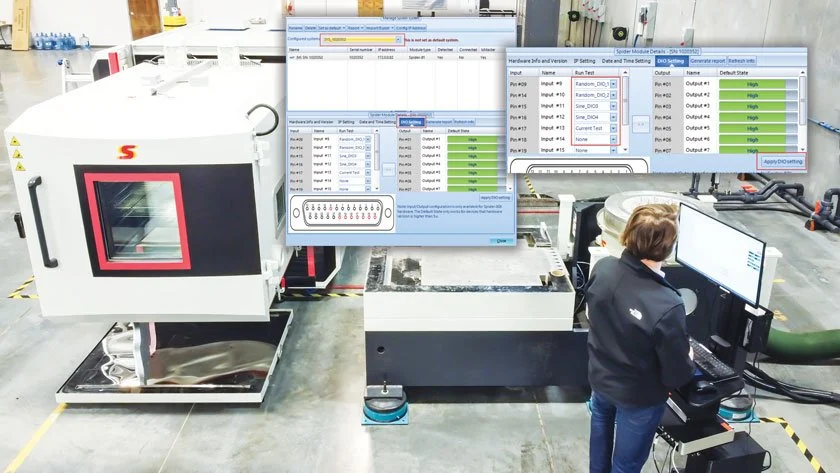Finite Element Analysis (FEA) frequency simulation allows the user to perform predictive analysis in the design phase and make alterations to the design if any major issues in the design are encountered in the simulation. However, it should be noted that real-world test data of the device should always be used to verify FEA results. A device’s resonant frequencies and mode shapes at those frequencies can be predicted using FEA. In this article, the resonant frequencies of a flat plate will be analyzed.
Read MoreRodents find vibration testing system amplifiers an attractive home. Stuart Little and Remy (Ratatouille) were appealing characters in great movies for the family but finding one of their relatives has made a home in your amplifier is not a good situation. Rodents and electrical equipment do not mix. If they do, it typically makes for expensive repairs.
Read MoreAs the leaves begin to change across the Charlotte metro area, Sentek Dynamic’s testing and demonstration facility is looking forward to the arrival of our next advancement in amplifier technology. In the coming months, Sentek Dynamics will be commissioning the largest capacity vibration testing system we have installed at our East Coast facility, and it will be powered by one of our new high-powered amplifiers.
Read MoreSentek Dynamics and Crystal Instruments returned to the 92nd Shock and Vibration Symposium in Denver, Colorado. The 2022 Shock and Vibration Symposium attracted an international audience with attendees from the aerospace, nautical, defense, and academic sectors as well as 47 commercial exhibitors.
Read MoreModal analysis is an essential technology behind solving today’s noise and vibration problems. Dr. Peter Avitabile, Professor Emeritus at University of Massachusetts Lowell, will discuss taking measurements – along with the pitfalls, difficulties, and common misconceptions related to modal testing. This seminar will focus on the practical aspects of impact and shaker measurements, the most common methods used to acquire data for experimental modal analysis.
Read MoreA Ground Vibration Test (GVT) involves carrying out modal analysis of an aircraft and its sub-assembly components to analyze and detect any changes in their structural properties. The modal parameters determined through this testing are used to validate analytical models. The modal characteristics are also used to predict the flutter of the aircraft in order to create a safe flight envelope before flight operation. Thus, GVT is a crucial process in the design and development cycle of aircrafts.
Read MoreCrystal Instruments recently updated the Vibration Utilities app (available for iOS and Android). This app supports features assisting in calculations related to the shock and vibration testing industry.
Read MoreVibration testing for the automotive industry, including the testing of batteries for electric vehicles, requires combined testing with temperature and humidity to ensure reliability and safety during operation. Contact Sentek Dynamics to configure a complete system or contact our testing service lab for more options.
Read MoreDeveloping a new product for commercial or defense application may require a wide range of tests to prove the strength and durability of a design. Shock testing is often required to ensure a product can endure the wear and tear it will experience when it is used in the real world.
Read MoreTo acquire FRFs of an engine, it is hung with bungee cords to imitate free-free boundary conditions. Two modal shakers were used to excite the V6 engine block. Shaker excitation provides better consistency and repeatability than a modal hammer. It also produces a cleaner data set because of a greater average. Multiple sensors are roved through the engine to obtain the vibration characteristics.
Read More










